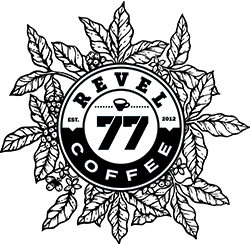The coffee industry has been dominated by the traditional drum roaster for centuries.
But a new way of roasting was pioneered almost 50 years ago that has a lot of benefits over drum roasters, and the specialty coffee world is finally catching on.
Traditionally, coffee is roasted on a drum roaster.
Drum roasters consist of a metal drum turned on its side over a heat source.
The coffee is placed in the drum and rotated over the heat source to roast the coffee.
This produces good coffee, but has some downsides.
For one, they can produce a lot of roasting defects, like scorching and tipping.
If the roaster is too hot at the beginning of the roast, you can scorch the beans as they enter the roaster, resulting in a strong, unpleasant burned flavor.
Tipping can occur when the beans are heated too quickly, and the gasses inside scorch the tips of the beans as they exit, again causing an unpleasant burned flavor.
These roast defects ruin batches, and roasters must work hard to ensure their heat settings and roast profiles avoid them.
On top of that, drum roasters are slow. They’re giant thermal batteries that take a long time to change.
If you discover the roast is going too fast or too slow, any heat adjustments you make at that point won’t help in the moment and will probably hurt other aspects of the roast down the road, ruining a batch.
Drum roasters can also burn the chaff of the coffee as it roasts, imparting yet another source of unpleasant burned flavors, and also muddies the flavor of the coffee.
Finally, they don’t roast the coffee evenly. Meaning the outside of the beans are cooked faster than the inside, which can result in burned and vegetal flavors all at the same time.
Almost all the coffee in the United States is roasted on a traditional drum roaster.
There are ways to avoid many (though not all) of these issues, but there’s also a different kind of roaster available: The Fluid Bed Air Roaster, and it avoids nearly all of them by its design alone.
And for that reason, many of the specialty roasters in other parts of the world, including the Nordic roasters, have started using them over drum roasters.
And so have we.
Fluid Bed Air Roasters suspend the coffee on a bed of hot air, which overcomes the shortcomings of the drum roasters.
They roast the coffee more evenly and highlight the fruitier and floral notes of the coffee at the same time.
You can’t scorch coffee on them because the heat comes from the air, not the walls of the roaster like it does on a drum roaster.
And because of the more even heat application, it is very difficult to cause tipping as well.
Fluid bed roasters are fast and nimble, so if something is going wrong with a roast, there is time to change course without causing problems downstream.
Fluid bed roasters also blow the chaff off before it combusts, which produces a cleaner, more articulate coffee and makes them ideal for Nordic-style specialty coffee.
All of this results in a roast that preserves and highlights the lighter, fruity, and floral notes of coffee.
So not only do we have a different take on coffee than most of the other places in Spokane, as far as I know, we’re the only one using a Fluid Bed Roaster to produce Nordic-Style Specialty Coffee.
If you haven’t tried it yet, come by! It’s a dramatic difference from what we all grew up on.
Until then, happy sipping!
Sean Edwards
